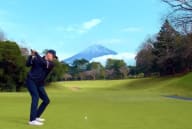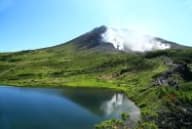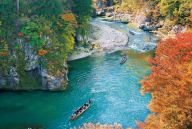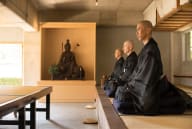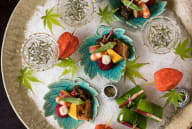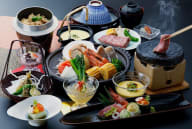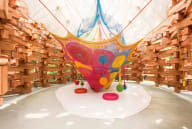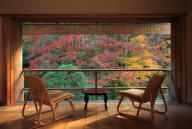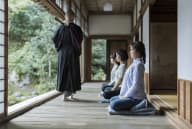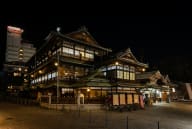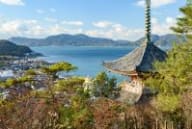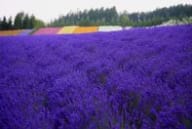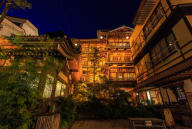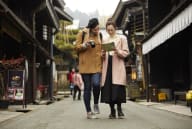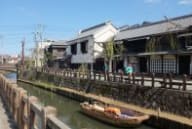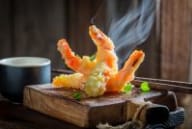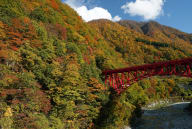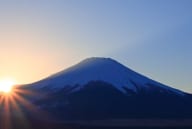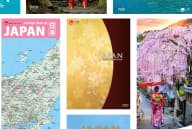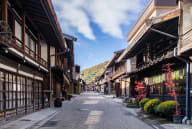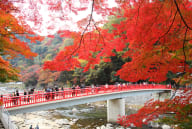
Before my trip to Japan, I thought I understood tea. I’ve been running a tea business in Canada for over a decade, and I’ve spent years talking about it, drinking it, and teaching people why it’s so good for them. I knew about all the different types, the brewing methods, the origin stories.
But standing in a tea field in Uji, surrounded by those rolling green rows and the hum of summer insects, I realized I didn’t really know tea. At least, not the way it’s known here.
Let me back up.
Like most first-time visitors, I pictured Japan through the bright buzz of Tokyo, the timeless charm of Kyoto that never stops popping up on my Instagram. And I can now concur with the rest of the world, that both cities are everything they’re hyped up to be.
But Uji?
Uji completely stole my heart.
This little city just south of Kyoto felt like a love letter to everything I care about. Nature, culture, craftsmanship, and of course, tea.
Feet in the river, heart in the past From the moment we arrived in Uji, we just knew that we were in the highlight of our whole trip. This isn’t a town where most first-time visitors would find themselves, but we felt like we were getting a chance to explore the true heart of Japanese life.
We checked into a gorgeous ryokan-style hotel, where the pace of our rushed itinerary immediately slowed down. I’m talking tatami mats, sliding doors, and a view of the Uji river that could honestly make you cry.
After checking in and cooling off from the intense summer heat, we wandered down to the Uji River and decided to ground ourselves in the moment by dipping our feet into the water. It was a cool respite from the hot summer air, and the river was so clear you could see fish swimming. We sat there, watching the sun start to dip and other curious tourists snapping pictures and taking in the beauty and the sounds.
Later that night, we serendipitously caught a cormorant fishing show. We had no idea what was happening, but we quickly learned that what we were observing master fishermen in wooden boats, guiding cormorant birds to pluck fish out of the water, with fire-lit lanterns and the sound of an ancient drum. It was unplanned, intense and honestly unforgettable.
That’s Uji. It doesn’t grab your attention with flashy sights. It gently reveals itself as you walk through it, and it introduces you to a side of Japan that will make you never want to leave.
The 21st-Generation Tea Master

This stop in Uji was about more than pleasure and calm sightseeing. It was a mission to understand tea at the source. So, through the platform Wabunka, we booked a tea tour experience that led us to Kaki-I Tea Farm.
That’s where we met Mr. Kakiuchi.
A 21st-generation tea farmer for a private tour of his tea farms. His family has been cultivating, harvesting, and perfecting tea for over 600 years. I’m still mind blown by this fact.
He met us at Uji station in his cozy Toyota with his lovely translator, Yui and greeted us with a kind smile as he drove us into the depths of Japan. I hate to sound cliché, but this was truly off the beaten path.
When we arrived at his tea farm all you could see were endless green hills, and it was all his. He patiently answered all of questions about how the tea is grown and picked and processed. And I even got to pluck a fresh tea bud for a taste.
The cherry on top of this experience was the chance to visit Mr.Kakiuchi’s traditional Japanese house for a tea tasting.
We sat around his table, no fuss, and had the chance to have a real conversation with endless cups of fresh tea. From gyokuro, to matcha, to black tea, the whole experience will make you rethink drinking coffee ever again (and this is coming from a coffee lover!)
You could taste the freshness and the care of a family that has been perfecting the art of growing tea for centuries.
As he poured us different flavours, we chatted about farming, family, about what it means to devote your life to one thing.
A Tea revolution… in the 1700s
During the tour, we have a chance to visit the former home of Soen Nagatani, the man who, back in 1738, invented the steaming method that gave us the vibrant Japanese style green tea we all love and drink today.
His method not only helped to improve tea’s overall flavor, but it also defined Japanese green tea. Instead of the more bitter pan-fried style of tea that was popular before Nagatani, his way actually preserved the color, aroma, and freshness.
As I stood there on the land where he worked and experimented, I felt this sense of awe and I was reminded of the power of one person’s ideas and contributions. It was amazing to reflect on how much tea changed because of this one man’s curiosity and innovation.
And as an entrepreneur myself, it reminded me that innovation doesn’t always look like a start-up or a new app. Sometimes it looks like a farmer tweaking a centuries-old process, just trying to make something better.

Tsuen Tea: 900 Years of Calm
Of course, we couldn’t leave Uji without visiting Tsuen Tea, Japan’s oldest teahouse, in operation since 1106.
Yes, you read that right. An almost 1000-year-old tea house.
I felt so immersed in tea history and culture as I walked into the small store. I was introduced to their variety of flavours and made sure to stock up on the best matcha I’ll ever try.
We ordered a matcha and a hojicha soft serve ice-cream and sat by the window overlooking the river, just letting the moment sink in.
I have to say it was one of the most meaningful cups of tea I’ve ever had. A lot of these experiences were so gripping because of the simple fact that these businesses and farms have endured through so much change and so many generations.
I think it’s the closest I’ll ever get to fulfilling my secret dream of time travelling.
So, what changed after Uji?
Before Uji, tea was part of my business, my routine and my work.
After Uji? Tea has become so much more.
I got to experience the art of what it is to grow and harvest tea, and how deeply and naturally it’s woven into the culture and daily rhythm of life in Japan. I saw the reverence people have for it, not just as a drink, but as a connection to generations past, to nature and to being present in the moment.
Walking through the tea farms, visiting the processing factory, and walking through a town with more tea shops than I could possibly visit in two days, it all gave me a new kind of respect.
In Japan, tea is crafted thoughtfully, seasonally and purposefully.
And now, back home, when I make a cup, I think about the hands that picked it. The family who’s been perfecting it for generations. And the timeless river I sat beside while sipping it for the first time in Japan.
Tea will never taste the same, and I’m so glad.
Written by Ren Lewis (@travelwithren.ca)
All photos credit to Ren Lewis
*The opinions expressed in the above article do not reflect the views of JNTO. All content and images are property of the writer unless otherwise specified.
If you would like to submit an article to our Travellers' Blog, click here.















